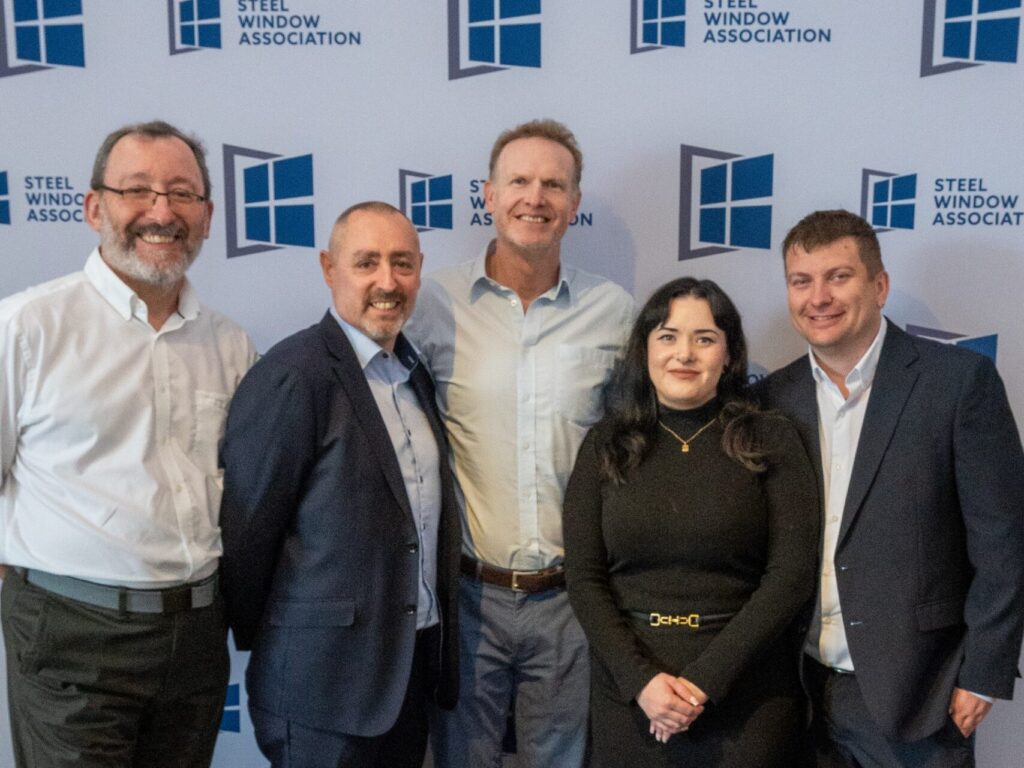Will the new Project Gigabit government scheme for broadband in housing developments help bridge the digital poverty gap?
In a world where going online has become an everyday occurrence for the majority of the population, expectations surrounding internet and Wi-Fi access, as well as broadband speed, in new development homes have increased rapidly in recent years.
In the past, internet access may not have been near the top of very many homebuyers priority lists. Now, however, it has seemingly become one of the more important things people consider before buying a property.
Some developers provide internet in their properties, while others leave it for the new homeowners to sort out. Either way, it’s becoming increasingly vital that buyers are given the best opportunity possible to have access to reliable, fast broadband, as well as being up and running in next to no time when moving in to a new build home.
Ultrafast access to the internet enhances the quality of living for homeowners and tenants alike. Ensuring it’s available makes good business sense for any developer, owner or property manager.
If you are building a development, whether it be an office building, flats, retirement home, new build estate or other multiple unit buildings you should be looking to make it fibre ready – to ensure it is easy for future residents or commercial occupants to connect. Any newly built community will need to come equipped with amenities, just like you would think to put in a shop or school, internet is also becoming a necessity.
The best time to prepare for fibre broadband is before and during the construction phase. Broadband connections are now considered a necessity for home and business owners and whether you’re planning a property development with ten units or hundreds of units, the new occupants will expect broadband and voice services.
In March 2020, the UK Government stated its plan in the 2020-2021 budget to dedicate £5 billion of government funding to support securing gigabit capable broadband in every home in the UK by the end of 2025. The Coronavirus pandemic has emphasised that digital resources are a necessity for all households, of any income, location or background. Project Gigabit is just one example of the housebuilding industry doing its part by attempting to tackle digital poverty.
Project Gigabit is the Government’s plan for nationwide coverage of gigabit-capable Broadband, and an updated target of ensuring at least 85% of the country has gigabit connectivity coverage by 2025. A Project Gigabit Phase One Delivery Plan has been published by the Government, developed through contribution from a number of local and devolved government bodies, in addition to private telecoms providers.
Why Project Gigabit?
While gigabit networks are being rolled out to a number of areas in the UK with slow speeds, it is estimated that almost half of the UK cannot currently access speeds greater than 30 Mbps. To address this, Project Gigabit will run concurrently with an existing “Superfast Broadband Programme”, and will target the hardest 20% of the country to deliver significantly improved internet speeds.
Through the combination of these two programmes, the UK Government has targeted a minimum of 85% of the UK having gigabit capable coverage by 2025, however the rollout under Project Gigabit will be pushed in order to get as close to nationwide coverage as possible.
The UK government has adopted a procurement model for Project Gigabit, complemented with vouchers, where telecoms providers can bid competitively for subsidies to deliver gigabit capable networks to specific areas across the UK where commercial rollout is unlikely due to high costs.
Gigabit Capable Networks
On the procurement side of Project Gigabit: “intervention areas” are identified through an Open Market Review and Public Review process, where the market’s plans for an area over the next three years will be surveyed, enabling the Government to identify areas which do not have gigabit capable networks and where commercial rollout is unlikely.
Each area will form a contract, which will be open to competitive bids from certain categories of suppliers designated to that area. Successful suppliers will be those who can rollout cost effectively, rapidly and at scale. The different categories of supplier include:
Regional suppliers – who have the capability, experience and funding to deliver cost effectively, rapidly and at scale across their respective areas. Regional suppliers will be appointed through competition for each area in the UK to lead delivery of between 70,000 and 150,000 uncommercial premises, in areas where there is least likelihood of commercial gigabit investment. These suppliers will deliver services to their respective areas in one or more phases (i.e ‘drawdowns’).
Cross Regional Suppliers – who have the capacity to deliver in multiple regional areas where there it is unlikely that effective competition from other suitable telecoms bidders in a regional area.
Local Suppliers – smaller competitions in areas where specialist network providers, are likely to be able to deliver better overall pace, coverage and value than a Regional Supplier. Local Suppliers will be appointed to implement more focused contracts, typically of between 1,000-8,000 uncommercial premises, called off through a competition on a Dynamic Purchasing System.
Procurements are currently planned to be delivered in three phases:
Phase 1 – Covering an initial set of procurements as part of a “learning phase”, covering areas where there is accurate market data, known market interest for subsidised rollout, and a clear requirement for subsidised rollout. Procurements in some areas covered by Phase 1 have already started;
Phase 2 – Additional procurements will be added to the rollout pipeline over time, with the Government providing quarterly updates on areas to be added to Phase 2 from June 2021; and
“Future Phasing” – Covering areas where there is already significant gigabit implementation expected (such as through the existing Superfast Broadband Programme) but will still likely need subsidy to reach full gigabit coverage.
In respect of the procurement rollout, it appears that the Government is encouraging telecom providers to continue with existing commercial builds of gigabit networks. Before any service ‘drawdowns’ in the case of Regional and Cross Regional suppliers, there will be an opportunity for local commercial deployment to occur ahead of any build plans under a procured contract being finalised. The Open Market Review process will continue to run and survey relevant intervention areas for developing commercial rollout so as to minimise the risk of any “public subsidised overbuild”; and the winner of a procurement will not obtain a legal monopoly to the specific area, but it will make it less likely for others to build in that area later on due to the uncommercial nature of many of the rollouts being procured.
It is currently unclear how much of the £5 billion of committed government funding will be allocated to this procurement side of Project Gigabit.
Gigabit vouchers
The UK Government already has a successful Gigabit Broadband Voucher scheme. From April 2021, throughout the year, the UK Government will commit up to £210 million of the £5 billion of committed funding as a top up to the Gigabit Broadband Voucher Scheme.
Under this scheme, individual vouchers worth up to £1,500 for residents and up to £3,500 for businesses are issued in rural areas without access to ultrafast services. This will be supplemented by ongoing top ups from local authorities and devolved administrations.
The UK Government has also successfully procured a number of Public Sector Hubs in remote areas and has set up a Dynamic Purchasing System (DPS) to aid in their procurement. Local authorities and administrators can procure services from the DPS and work with suppliers to continue to provide gigabit services in the hardest to reach areas of the UK. It is expected that other government departments and authorities are to participate and the programme remains highly active, with over £50 million of future work scheduled.
Immediate next steps
Telecommunications operators who seek to become involved in these procurements have therefore been encouraged to propose commercial build plans to shape future procurement opportunities in which they wish to participate, assess their eligibility for current voucher subsidies to finance projects and register themselves with the Dynamic Purchasing System operated by the UK Government in preparation for their future bidding.
Should providers be successful in their tender, it is anticipated that projects can begin as early as the first half of 2022.
Jimmy Acton, CTO, 4th Utility
Without gigabit infrastructure broadband providers will struggle to support the ever-changing technological advancements, in many areas of our lives including education, lifestyle and entertainment. Technology hasn’t always been part of how we access our doctors and clinicians. Recent changes in how we interact with our healthcare system will have a profound bearing on the framework in place now and in the future, in delivering a reliable and stable service.
At 4th Utility we’ve recognised the digital poverty gap not only in new build but in retro delivery – we’ve launched a USO (Universal Service Offering) to help residents access our full fibre technology at an affordable price. When working with housing associations and local councils we see the importance of making this available.
All new build homes must be equipped with the correct infrastructure to provide enablement for residents to access digital services without any complication. The digital poverty gap prevents those working or schooling from home accessing the content they need to conduct day-to-day activities.
The challenges in the UK today that create the ‘gap’ still exist in homes currently served by legacy cabling and infrastructure. We know there is a plan; we know it is being addressed but, it’s not going to happen overnight. We understand the importance of reliable ultrafast broadband and we’re rolling out retro full fibre installations across the UK, solving the problem for 1000’s of homes every month. We focus on ultrafast full fibre broadband leveraging the GPON technology. The result and feedback are rewarding when we see the difference in what we provide.
Right now, businesses like us at 4th are working to upgrade the current infrastructure in homes to solve exactly what the government has set out to achieve by 2025. I feel if network providers out there today deliver legacy technology to homes, they’d be adding to the already large problem. I recently attended and spoke at the ‘Connected Britain’ conference in London, it was fantastic to hear that most providers appear to be rolling out fibre to our respective regions.
Charles Davies, MD ISP for Hyperoptic
Hyperoptic unveiled new research assessing the key factors motivating home movers and the developers that build and maintain property. The study is one of the largest of its kind, some 228 housing professionals and 2,000 homeowners or renters were quizzed about their expectations regarding property.
The clear finding is that broadband is now the ‘4th utility’ – on a par with water, gas and electricity. Some 86% of the public claim that having a decent connection in their property is ‘important’ to them whilst 64% said they would be ‘put off’ by a home with slow Wi-Fi. Overall, over half (54%) said they are ‘more likely’ to purchase or move into a property with a good internet connection.
The results show the level of importance both residents and the property sector places on reliable, fast broadband. Whilst talk of it being the ‘4th utility’ has been around for some time now, this research proves it’s no exaggeration. For those in the property sector, the message is simple – residents expect fast reliable broadband and providers such as Hyperoptic are on hand to install lightning-fast services at no cost to them.
Clive Selley, CEO of Openreach
Providing full fibre to new homes is an important part of Openreach’s commitment to invest in faster, more reliable broadband technology – as part of our ‘Fibre First’ strategy.
We’ve been progressively lowering the plot size threshold at which we offer free full fibre installation for new housing developments. This is now available to smaller developments of just 20 homes. In addition, we’ve capped the amount house builders contribute if they ask Openreach to build full fibre to smaller-scale developments of just 2 and 3 premises – to help encourage further full fibre take-up.
We welcome the government’s announcement that all new build homes will be required to have the infrastructure to support gigabit-capable connections, and we will work closely with government and housebuilders on the best way to deliver this.
We are building more new homes than at any time in the last 30 years and helping more people to get onto the ladder. We want to ensure those new homes are high quality and fit for the future. The announcement will deliver internet speeds 200 times faster than you would need to watch an HD film on Netflix.
To stay up to date on the latest, trends, innovations, people news and company updates within the UK property and housebuilding market please register to receive our newsletter here.
Media contact
Rebecca Morpeth Spayne,
Editor, Showhome Magazine
Tel: +44 (0) 1622 823 922
Email: [email protected]











